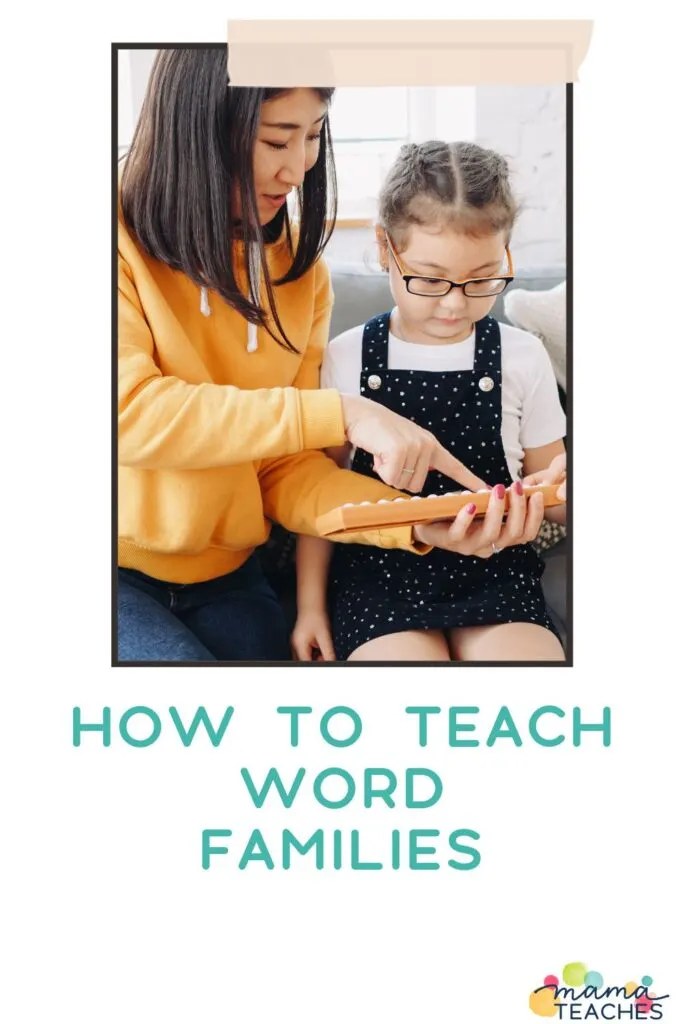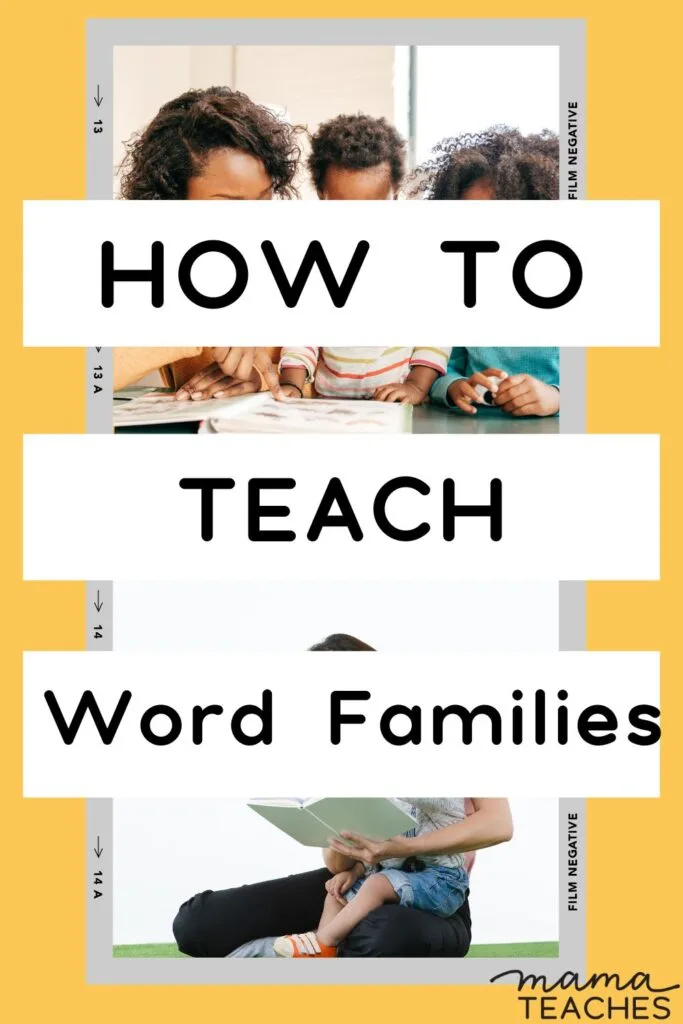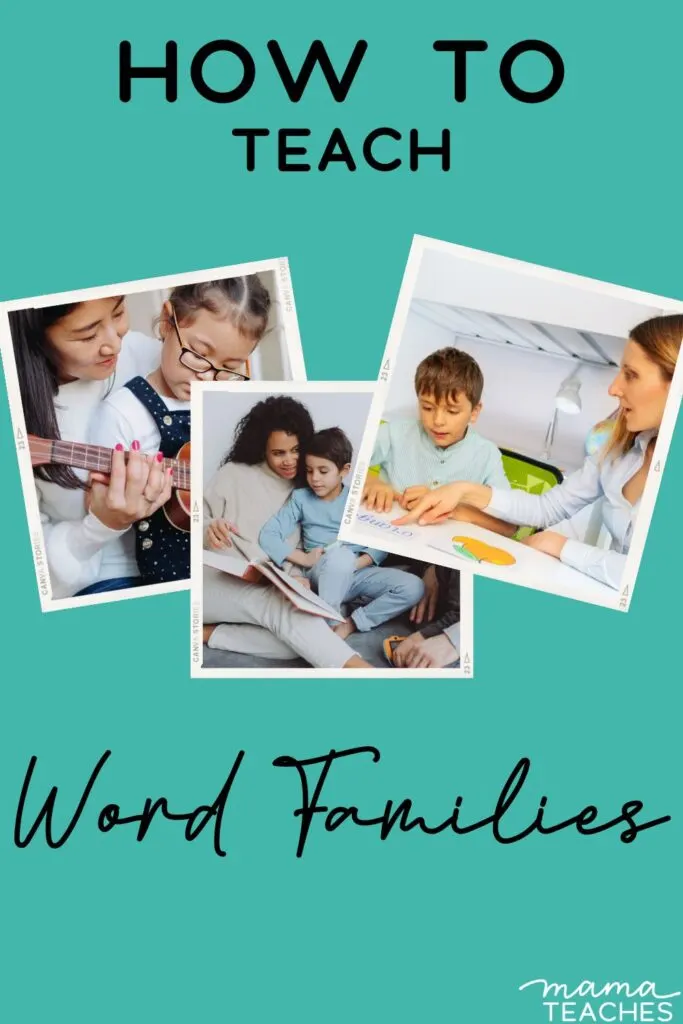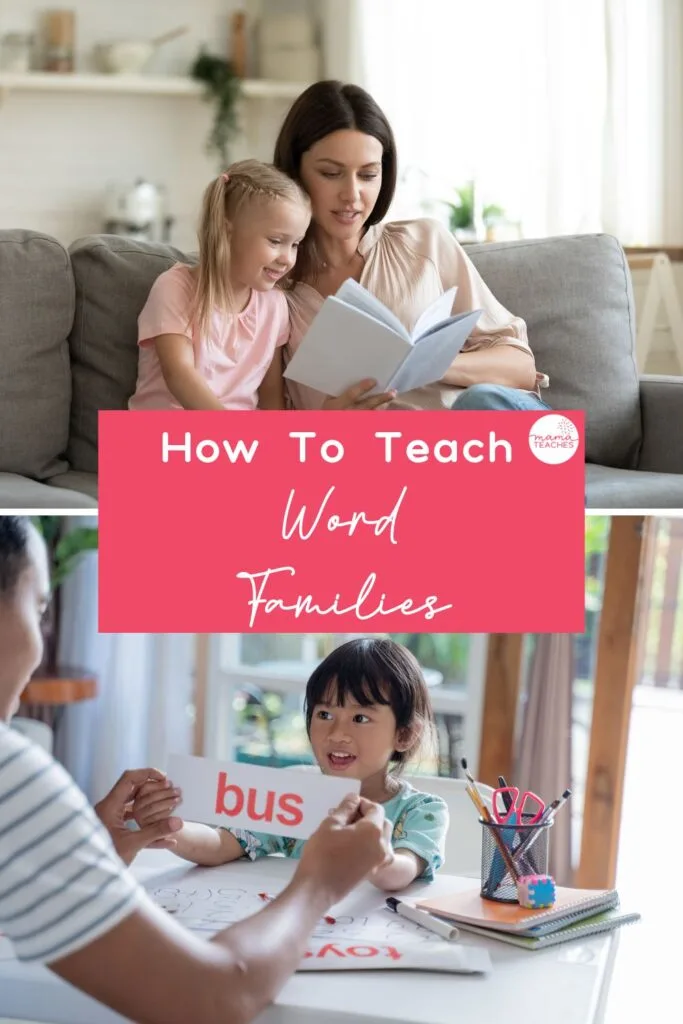Cat, bat, sat, and rat.
They don’t just rhyme–they are members of the same word family!
If you want to know how to teach word families, we’ve got the answers right here.

This article contains affiliate links to things that you might like.
What Are Word Families?
Word families are groups of words related by spelling pattern and pronunciation.
They have a similar component, meaning that once you learn to read one word, you can easily read the other words in the same family.
For example, the words cat, rat, and bat are all in the -at word family.
Some words appear to be in the same family because they are spelled the same, but their pronunciations are different.
Blood and mood both end with -ood, but they are not in the same word family because they do not rhyme.
In 1970, Professors Richard E. Wylie and Donald D. Durrel published an educational journal article entitled “Teaching Vowels Through Phonograms.” The article listed the 37 most common word families (or phonograms) in the English language.
Teachers still use their list to introduce students to phonetic patterns.

Why Teach Word Families
When you teach word families, you point out the patterns in words, making both reading and spelling easier to learn.
Your beginning reader will be able to decode with increased confidence as he recognizes words with the same phonogram (like sight and bright).
It’s also a great way to focus on the different meanings of similar-sounding words.
10 Common Word Families
If you want to know how to teach word families, you have to be able to recognize them.
Here is a list of 10 common word families.
-ight
bright, light, sight, might, tight, night, blight, fright, fight
-at
mat, sat, bat, cat, that, gnat, rat, brat, fat, hat, pat
-ite
bite, kite, white, mite, rite, site
-ool
cool, pool, drool, fool, tool
-un
bun, sun, gun, run, fun, nun, pun

-out
shout, grout, about, rout, clout, bout, gout, pout, tout
-one
zone, bone, tone, alone, lone, cone, phone
-eat
beat, seat, cleat, neat, feat, heat, peat, wheat, cheat
-ow as in “low”
tow, mow, snow, throw, grow, blow, sow, bow, low, arrow, yellow
-ay
say, may, pay, cay, bray, allay, lay, pay, way, ray, day

Word Family Activities
You can practice word families with these multisensory activities.
Word Family Eggs
Reuse last year’s plastic Easter eggs in this reading craft.
When your student twists the egg, he reveals a new word in the word family.
Crazy Eggs Word Family Game
This interactive game combines reading with matching.
You can make this game in 5 minutes!
Kids get to take charge and create colorful combinations (and practice reading at the same time).
Nursery Rhymes
Nursery rhymes are chock-full of word families.
Play a seek-and-find game where you list the word family, and then the student hunts for the members of the family in the nursery rhyme while you read it aloud.
Some of the best nursery rhymes for this game are Old Mother Hubbard, There Was an Old Lady Who Swallowed a Fly, Little Mouse, and Knick Knack Paddy Whack.
Magnet Board
If you have a set of alphabet magnets and a magnet board (or a fridge), you can create a word family by placing the phonogram on the board (like -at) and then adding different beginning letters for the student to read.

Word Family Cars
Draw a colorful car on the front of 10 envelopes.
Label each vehicle with a word family phonogram.
Inside, the different “members of the family” are taking a ride.
These are cut-up index cards with initial letters on them.
For example, the -en car envelope has the letters p, wh, t, and d inside.
The student can slide out the index cards and place them by the car to read a word in the word family.
How to Teach Word Families to New Readers
Teaching word families is not complicated; it’s simple!
By trying some of these word family activities, you will empower your beginning reader to tackle unfamiliar words and decode them with confidence.
You May Also Like:
- How to Create the Ultimate Kids Reading Nook
- How to Teach High Frequency Words
- How to Teach Rhyming Words
